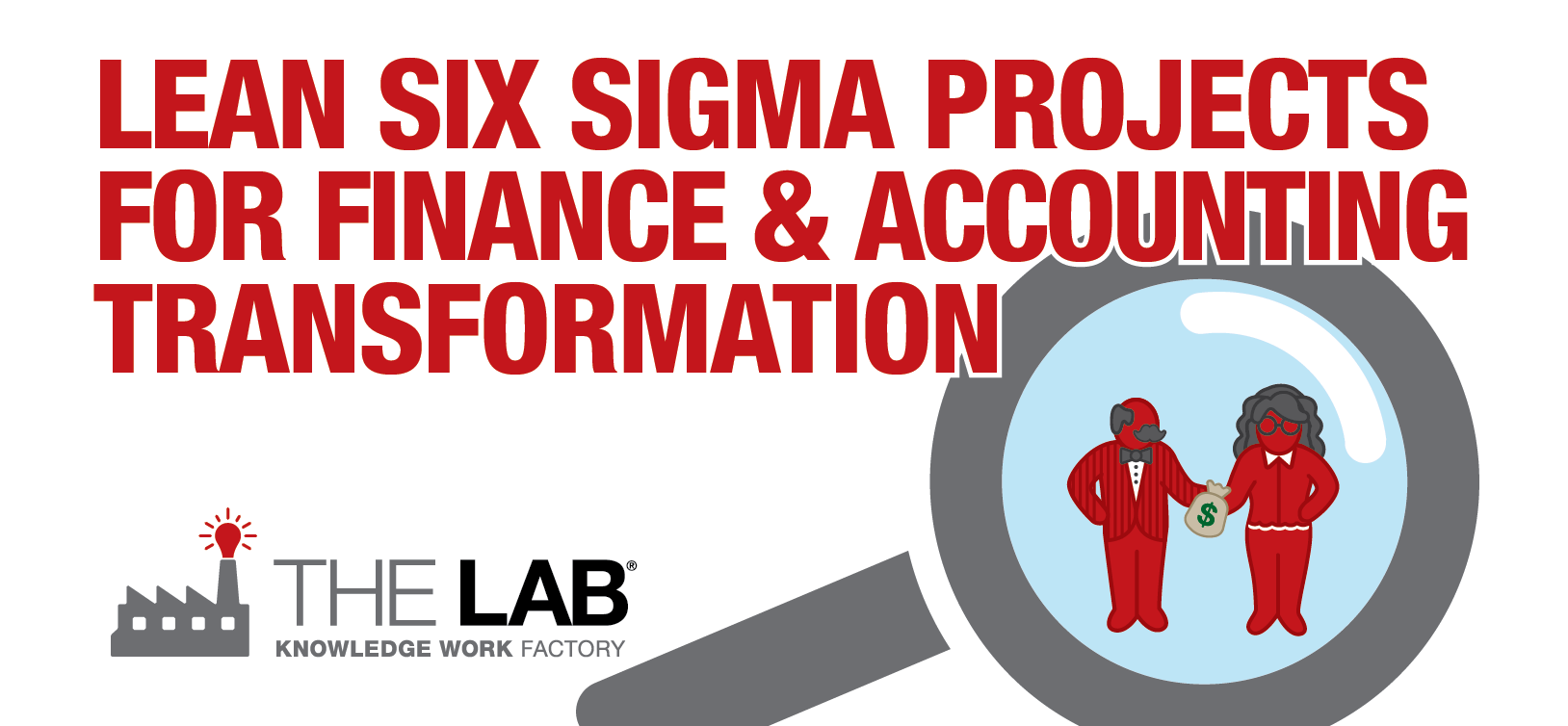Our previous article in this series shone a spotlight on the lean six sigma finance transformation challenges in the fiercely competitive world of retail operations. This article zeroes in on an equally high-pressure environment: Retail investment management.
The Lab has extensive experience in this realm, helping firms from regional players to top-five global powerhouses. The stories in this article are true, derived from numerous lean six sigma projects and business intelligence services finance operations engagements.
Application of lean six sigma finance transformation means identifying redundancies and measuring with business intelligence services
Month-end closing should be accomplished in less than a month, right? Of course. But that’s not the case for many high-profile investment-management firm’s finance operations. One firm we worked with was still trying to prove to Wall Street the value of its recent merger with another firm. But here, month-end closing took nearly 60 days. There were not two, but three sets of books to manage: one for each firm, and a third for the newly-combined entity. A new financial system was in the planning stages, yet still a year in the future. This was hardly the cost-cutting benefit of a lean six sigma finance transformation that would impress shareholders. Where were the promised efficiency gains? The CFO needed to make progress, and fast.
A two-phased project approach to lean six sigma finance and accounting transformation with business intelligence services
The story above is hardly atypical. When The Lab is brought in by the CFO to create a “finance and accounting knowledge work factory,” there are gains to be won—but they’re often hiding in plain sight. That’s why we leverage our 25 years of lean six sigma projects in finance and accounting, operations data analytics services experience and world-leading database of improvement templates to aid our clients.
The scope of our lean six sigma and business intelligence projects can be wide-ranging. One firm we worked with employs nearly 15,000 advisors, and a finance function which includes shared-services accounting teams. We’ll typically be tasked to scrutinize the month-end close process for improvements, uncover cost-cutting opportunities, and provide leaned-out finance and accounting principles. Our purview can include, for example:
- Standard finance management reporting rationalization
- Reporting inventory and centralization
- Strategic analysis
- One-off requests
- Capacity management with business intelligence services
False precision hampers lean six sigma finance and accounting transformation
As we’ve noted in this series of articles, there’s a prevailing tendency to “complexify” finance operations groups, to the detriment of their performance. For one client, we found more than 38,000 discrete line items on their general ledger, yet only 500 of them—less than one percent—accounted for 75 percent of total expenses. Similarly, we’ll encounter similarly-named, utterly confusing department titles, such as “Administration,” “Administration 001,” Administration 1 yr,” “Administration Temp,” and so on. For one client seeking a lean six sigma finance transformation, just ten of its 500 departments accounted for 75 percent of the business unit expense. All of this costly “false precision” stands in the way of improved analysis, forecasting, and reporting.
Lean six sigma finance and accounting transformation projects in action
The Lab employs a database of non-technology improvement and business intelligence services KPI templates; we use these to help clients transform finance operations in as little as six months. Costs can be cut; capacity can be recouped; operational analytics and business intelligence accurately measured; management reports can be standardized and consolidated. And all of this can be accomplished with the firm’s existing technology; no new tech investments are required.
Here are some examples of the over 200 non-technology lean finance department improvements we recently helped one of our clients to implement:
- Getting the analysts back to analyzing with lean finance transformation. Multiple finance systems meant that costly analysts were relegated to basic accounting reconciliation. That’s a waste. By implementing lean finance and accounting principles, we were able to help simplify the chart of accounts and standardize reconciliation methods. Dedicated reconciliation teams were impaneled, specialized by account category. The result? Analysts went from spending 70 percent of their days on reconciliation to less than 15 percent.
- Fewer finance management reports, better business intelligence services information. The finance function created nearly 2,000 reports every month. The reports were designed by the individual business lines, with no oversight from finance management. As a result, the reports were inaccurate, redundant, and often downright irrelevant. It sounds terrible, but it’s more common than you may think. Within just six weeks, The Lab standardized report design and added a layer of KPIs using finance business intelligence services to provide true insight into operational performance. And over half of all management reports were eliminated entirely.
- Fighting back against the “drop-everything” finance operational reporting requests. Since the standard finance management reports lacked useful information, business line managers frequently had little choice but to ask for urgent one-off reports containing supplemental analysis. Yet these “drop-everything” requests sapped nearly half of the finance organization’s capacity. Lean finance transformation—in the form of standardized processes for submitting and reviewing requests—eliminated 75 percent of the “drop-everything” one-off reports.
Bottom-line impact of lean six sigma finance transformation projects in retail investment management accounting operations
If you’ve read any of the other examples of six sigma projects in finance articles which we’ve posted here at The Lab, the results we’re about to reveal won’t surprise you. If this is your first one, prepare to be shocked. That’s because engagements like these typically improve productivity more than 18 percent, cut operating costs more than 20 percent, and increase capacity more than 25 percent, all while increasing operational visibility with business intelligence services… all with existing technology.
For one of our clients, this translated to annual savings of $23 million. The entire lean six sigma project in finance and accounting self-funded in just four months. By the end of the year, ROI stood at sixfold.
If you’re looking to undertake a lean finance transformation, consider looking to The Lab. In just one 30-minute phone call, we can easily explain to you how we work, what we’ve done for others, and how you can benefit. We employ a unique self-funding engagement model, and money-back guarantee. It’s, in a word, irresistible. Contact us today to set up that no-obligation call.


















